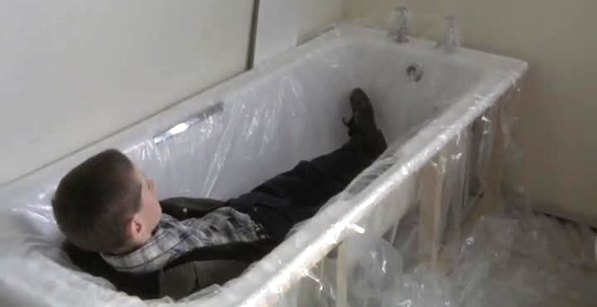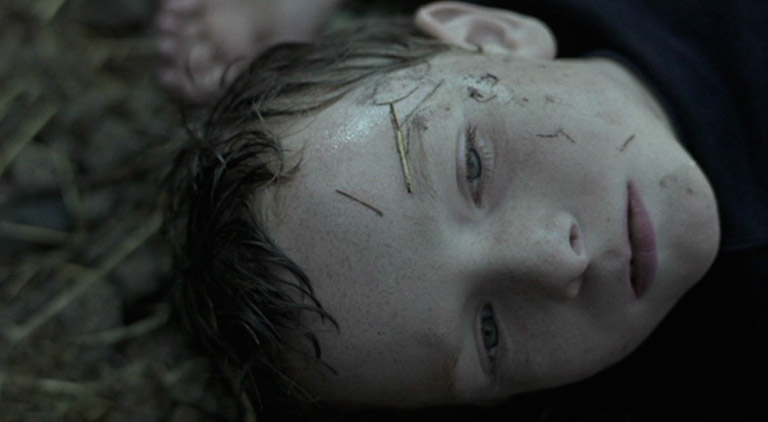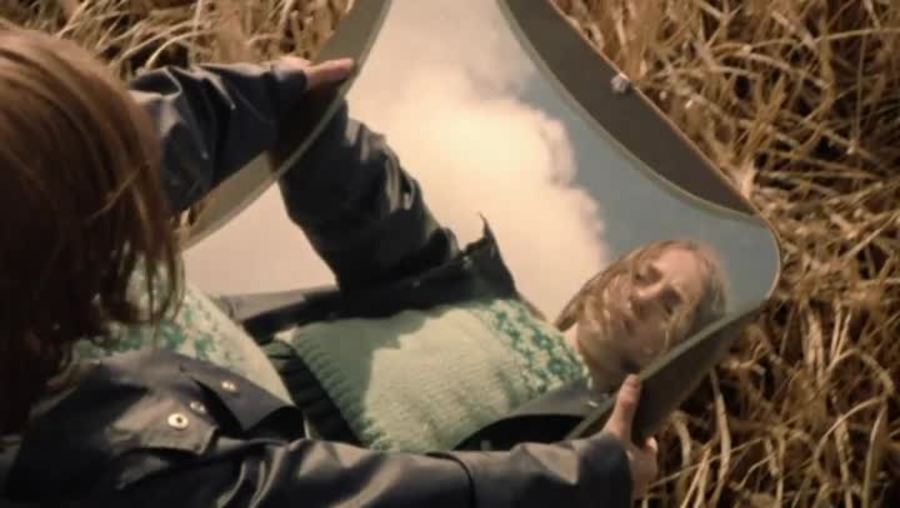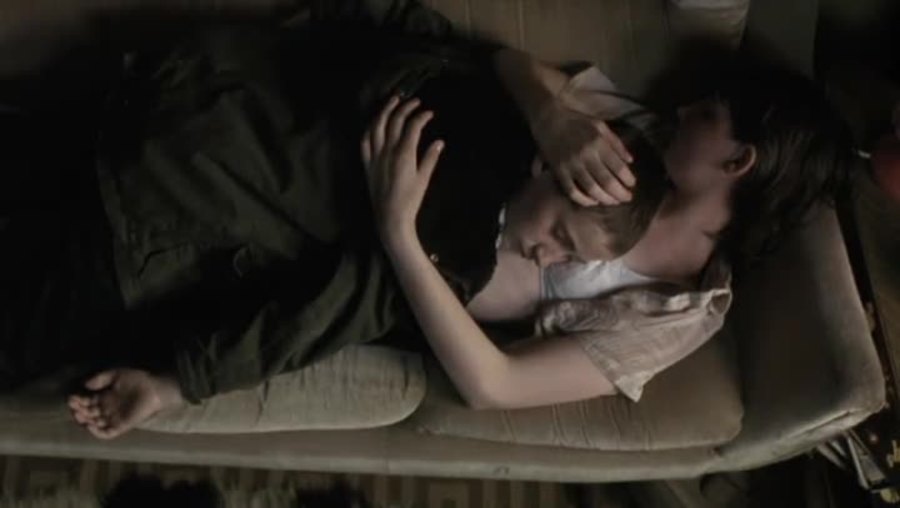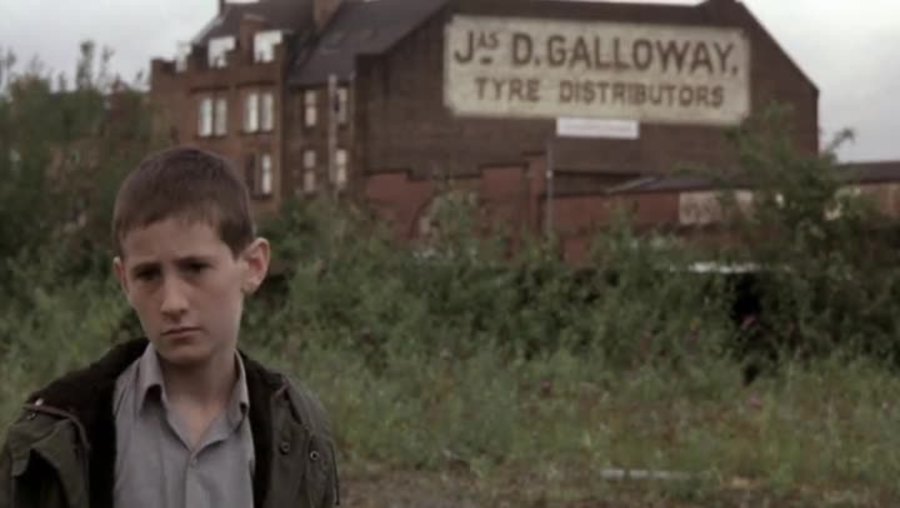In a static, slow-motion shot, a small boy, Ryan (Thomas McTaggart), turns while wrapping himself in a white curtain decorated with flower patterns. The sound—faded, distorted, as if coming from a distant place—takes the child’s subjective perspective. We might imagine this is how babies sense the exterior world when they are in their mothers’s womb—or how bodies experience the last moments before death’s embrace. Suddenly, Ryan’s mother (Jackie Queen) bashes his head, and her angry voice reprimands him. Sound and movement recover their realistic character. When both figures leave the frame, the camera remains in the same position, showing how the curtain slowly unravels. Lynne Ramsay’s Ratcatcher (1999) opens, as her best known feature We Need to Talk About Kevin (2011) also begins, with the camera fixated on this curtain: a veil between the real, material world and the inner depths of dream and fantasy.
In hindsight, this opening sequence seems to prefigure—through the perfectly banal act of a child playing with whatever is at hand—the film’s major dramatic incident, taking place only minutes later, when Ryan accidentally drowns in a canal while playing with young James (William Eadie). This moment, however, isn’t underlined in any conventional way. Ramsay refuses to signal in advance its weight or importance. Tragedy simply happens, without warning, in the midst of a tussle between kids. Its depiction is filled with the uncertainty and confusion of the moment. As if aligned with James’s psyche, the camera remains unable to react, paralyzed with fear. For a brief moment, it seems to grasp the gravity of the situation; but, as soon as this happens, it also tries to deny it. James erases his presence from the place and runs home. His secret will become the great “untold” of the film. He tries to keep the memories of this day separate from his conscious thought, but they return in different variations and mirroring all throughout Ratcatcher.
Ramsay’s cinema is obsessed with these kinds of traumatic experiences—often related with death—of discovery and realization, and of subsequent grief and guilt. And it’s precisely in these crucial scenes of trauma where Ramsay’s cinematic approach becomes clear. The more observational, non-interventionist side of her style is torn apart by the characters’ subjective experience: the contours of the real world disappear, its sharpness recedes, sound fades, the camera moves hypnotically as in a trance, and the whole film becomes a protective membrane, a defense mechanism for the protagonist’s psyche. And, in turn, this nowness of subjective experience—which can make us forget how tightly plotted Ramsay’s narratives really are—is also pierced by an exterior knowledge, because the parallel montage that joins different actions happening at the same time in distinct places marks the fateful connection between certain events. The enigmatic, mysterious and unsettling aura of these traumatic experiences comes, precisely, from the undulating, ever-shifting perspective: this tension is at the core of Ramsay’s work as a filmmaker, and it creates a dynamic equilibrium that is among the most rigorous traits of her narrative style.
Even if the environments and characters of Ramsay’s films (and especially Ratcatcher) might prompt us to automatically link her with the social realism movement in cinema, she is, in fact, on a completely different path. Her movies are less concerned with denouncing situations and structures than with creating a space for real understanding and co-experience. This doesn’t mean that they are exempt of critique; but there isn’t a programmatic political agenda behind them. Her characters are never mere instruments of their social environment; their depictions are refreshingly non-judgmental. In truth, what seems to drive her passion as a filmmaker is the presentation of a certain sense of intimacy (in relations with other people, and with oneself). In Ratcatcher, Ramsay fully enjoys depicting domestic, familial, everyday rituals, the ties between members of a neighborhood and the birth of a friendship between James and Margaret Anne (Leanne Mullen). She finds unexpected expressions of joy, tenderness and warmth in the most quotidian gestures, and a feeling of bonding that springs up, despite all the fights and arguments, the negativity and discontent. At the same time, Ramsay is also driven to convey those thoughts and emotions that belong only to each of us, that sculpt our unreachable individuality.
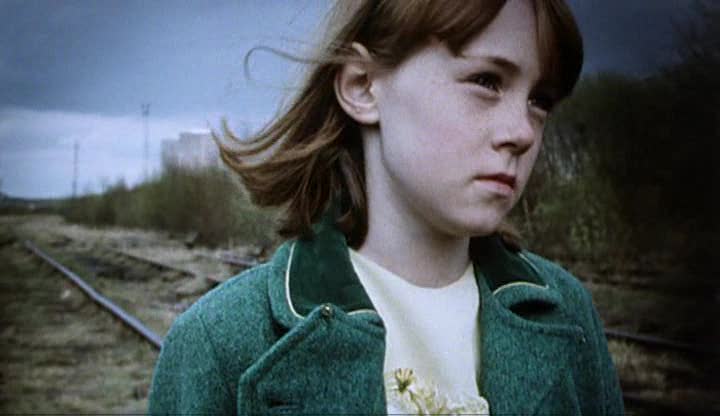
Ramsay has always been interested in the ways in which the characters’s physical itineraries interact with the crucial encounters they have and the discoveries they make. In her magnificent short Gasman (1998), this itinerary—a journey, back and forth, alongside a railroad, from home and hearth to a Christmas party in a pub—not only frames the central, dramatic situation but also shapes a traumatic milestone in the growing-up process of Lynne (Lynne Ramsay, Jr): the discovery that she shares her father with another family. Some of Ratcatcher’s best moments involve several visits by James to an unknown place where new, as yet uninhabited houses are being constructed. James deduces—and the movie never either confirms or denies this—that these are the houses where he and his family will move in, if the council accepts their relocation application.
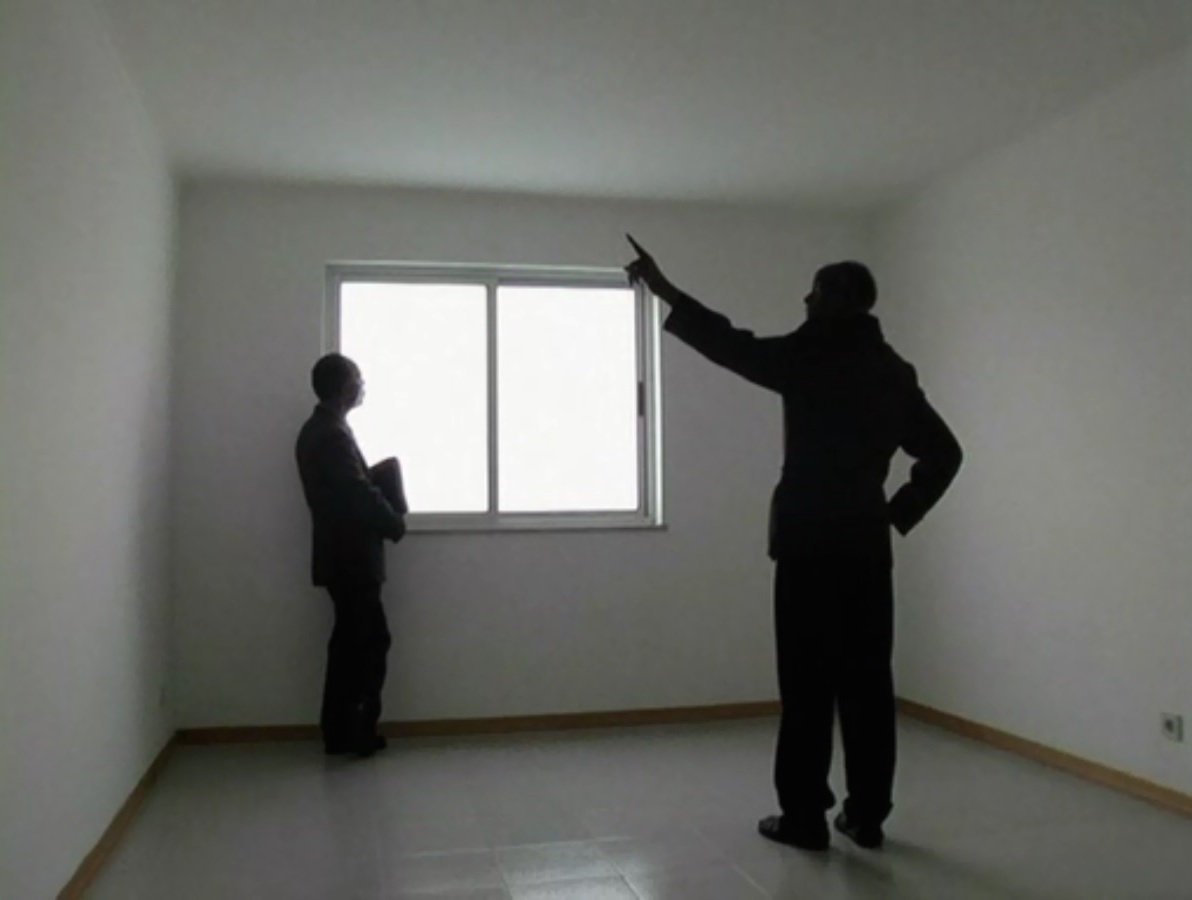
When, in Pedro Costa’s Colossal Youth (2006)—revolving around the demolition of the extremely poor neighborhood of Fontainhas in Lisbon—Ventura is relocated to a newly assigned house, he feels like a phantom, uninvited. In contrast with the slums of Fontainhas, where stories, dreams, and lives are imprinted on the walls, these new houses—which look almost extraterrestrial and feel existentially empty—crush Ventura with their white, impolite walls and high ceilings. At the other extreme, for James in Ratcatcher, the possibility of relocation gives rise to an overwhelmingly positive experience: while the bus advances, the landscape changes, opening a new space freed from the claustrophobia of his usual neighborhood.
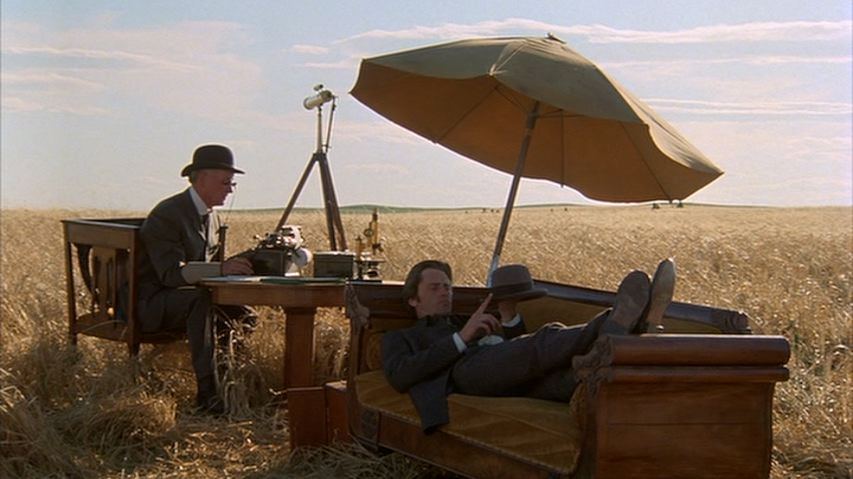
If the protagonists of Morvern Callar (2002) and We Need to Talk About Kevin need to travel to distant countries and immerse themselves in foreign languages and cultures, for James it is enough to move a few miles away in order to suddenly feel that his world is exponentially enlarged. In the great expanse of fields where earth and sky meet, he runs and frolics, filled with an unexpected sense of joy and beauty. There’s something very Malick-ian in these moments, and Ramsay is undoubtedly aware of it: not only does the Carl Orff music used in Badlands (1973) make an appearance during a hamster’s voyage to the moon (one of the film’s most memorable and surreal sequences), but also a particular passage of Days of Heaven (1978)—with the characters transporting domestic props and furniture across the fields—seems to have been the main inspiration for Ratcatcher’s dreamy ending.
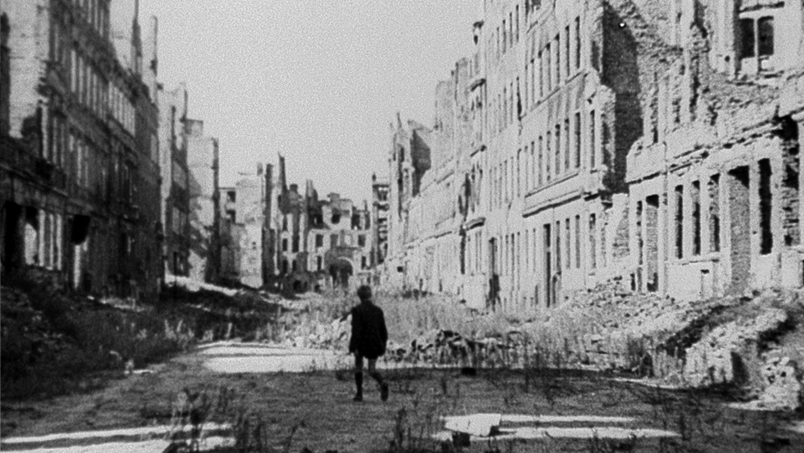
But it is Roberto Rossellini’s Germany, Year Zero (1948) that resonates most in Ratcatcher, to the point that Ramsay’s feature debut can seem like a very clever, free remake of it. Post-war Berlin in ruins has been substituted here by a suburb of Glasgow infested with rats during a garbage strike. Like Edmund (Edmund Moeschke) in Rossellini’s movie, James is in a perpetual state of wandering; the mortal secret he holds plunges him into a loneliness that can’t be shared. His eyes register moments that will become scars, and his external actions are the only door to his troubled, inner self. He is in pain but unable to tell where it hurts; unable to articulate the words or utter a cry for help. The final sections of both films are constructed as journeys toward a progressive recognition, toward the full acknowledgment of an unbearable responsibility.
The devastated landscapes work as a reflection of the soul; the guilt and shame explode when others pronounce the blame of the protagonists. A series of incidents—the father’s funeral in Germany, Year Zero, the heroic actions of James’s Dad (Tommy Flanagan) in Ratcatcher—become a fatalistic mirror that confronts both boys with their actions, or their inability to take action. Edmund feels definitively expelled from the world when he is rejected by the other children; James finds the doors of his personal paradise locked. If, in the first visit to the new houses in Ratcatcher, the camera magically transcends the walls and flies with James to the beyond, film and character entangled in a perfect harmony, then here, in this second visit, James cannot penetrate the site and the camera remains inside, as a gatekeeper, while rain pours down on the kid. The extremely bleak ending of Germany, Year Zero is expanded here, again with a Malick-ian touch: the Hell on Earth gives raise to an imaginary Eden that springs from James’s sincerest, innermost desire.

